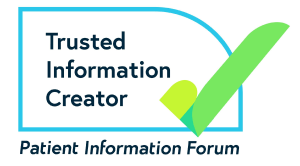What happens just after your premature baby is born (first tests and treatment)
As soon as your baby is born, the healthcare team will make sure they are stable. This means keeping them warm and providing any extra support they need, depending on their individual needs.
Keeping your baby warm
Newborn babies get cold quickly and can’t maintain their own temperature. Your healthcare team will put a hat and warm blankets on your baby. Premature babies are more likely to get cold so the team may place them under a heater or on a heated mattress to help keep them warm.
Some babies born very small or very early are also placed inside a plastic wrap or bag up to the neck until they have been moved to an incubator.
Helping your baby breathe
The healthcare team will assess your baby's breathing and support them to breathe if neccessary. Some babies need suction to remove any mucus or other fluid from the airway. If your baby needs help to breathe properly, the healthcare team may use oxygen or support breathing in other ways. For example, sometimes babies may need a breathing tube inserted into their lungs to help support their breathing.
Find out more about breathing support for premature babies.
Monitoring your baby’s heart rate
If your baby’s heart rate is low (less than 100 beats a minute), this may be a sign that they need help with their breathing. The healthcare team will give them a mix of air and oxygen through a mask or tube and monitor their improvement.
If your baby has a low heart rate, your healthcare team may give them check compressions to push blood to the heart. A small number of babies may also need medication to improve the circulation of blood around the body. Your healthcare will decide whether these are appropriate options for your baby and discuss these with you.
What is an Apgar score?
The Apgar scoring system is used to see if your baby needs any extra medical care in the time immediately after birth and whether they need help with their breathing and blood circulation.
The Apgar scoring system measures your baby’s:
- Appearance (skin colour). It can be harder to detect bluish skin or a lack of colour in black and Asian babies so your doctor or midwife may check the palms of your baby's hands or the soles of their feet).
- Pulse (heart rate)
- Grimace response (reflex: crying or moving away in response to stimulation)
- Activity (muscle tone)
- Respiration (breathing)
Your baby will score 0, 1 or 2 for each of these. The scores are then added together to give an Apgar score between 0 and 10. A score of 6 or less may mean that your baby needs help with their breathing.
The Apgar score is just a guide. Healthy premature babies sometimes have a low Apgar score because they have had less time in the womb to develop their muscle tone, colour and reflexes.
If your baby receives a low score, try to remember that they will receive expert care from highly trained healthcare professionals who will know what needs to be done to help resolve any issues.
What is delayed cord clamping?
If possible, the healthcare team will delay clamping the cord until at least 1 minute after the birth. During this time, blood, oxygen and nutrients will continue to pass through the umbilical cord to your baby.
Sometimes it isn’t possible to delay cord clamping, for example if your baby needs help to breathe. But some hospitals may have equipment that will support the baby’s breathing and allow delayed cord clamping. Read more about delayed cord clamping.
How soon can I see my baby after the birth?
The healthcare team will tell you how your baby is doing and what they’re doing to care for them. This means that you may need to wait until the healthcare team has checked your baby before you can hold them. It may be possible for you to have a cuddle with your baby before they are transferred to the neonatal unit.
However, if your baby is born too early, then it may not be possible to hold or cuddle your baby before they are transferred. Things may also depend on your health after giving birth.
“I was unable to see my precious baby for over 24 hours due to my condition, which was really tough. But a key member of the delivery team brought photographs and gave me a thorough update of my baby’s progress. I was confident that they were in the best hands. My husband also facetimed me from the incubator side, which was really special.”
Debbie
What happens next?
Your baby will move to the neonatal unit, where they will receive the care they need. It may be necessary for your baby to be transferred to a more specialised unit, depending on how early they are born or the type of care they need.
Find out more about transferring your premature baby.
Wyllie J, Ainsworth S, Tinnion R (2015) Resuscitation Council Guideline: Resuscitation and support of transition of babies at birth. www.resus.org.uk/resuscitation-guidelines/resuscitation-and-support-of-transition-of-babies-at-birth/
McCall EM et al. (2018) Interventions to prevent hypothermia at birth in preterm and/or low birth weight infants. Cochrane Database of Systematic Reviews 2018; Issue 2. Art. No.: CD004210. DOI: 10.1002/14651858.CD004210.pub5.
Chapman V, Charles C (2018) The Midwife’s Labour and Birth Handbook 4th ed. Wiley-Blackwell, Oxford.
Sweet DG et al (2019) European Consensus Guidelines on the Management of Respiratory Distress Syndrome - 2019 Update. Neonatology 115(4): 432–450.
Rutter C. Examination of the newborn baby at birth. In: Chapman V, Charles C (Eds.) The Midwife’s Labour and Birth Handbook 4th ed. (2018)
Encyclopedia of Children's Health (2021) Apgar Testing. www.healthofchildren.com
BMJ Best Practice. Apgar Score. https://bestpractice.bmj.com/calculators/en-gb/ApgarScore.htm
The American College of Obstetricians and Gynecologists (2015, reviewed 2017) The Apgar Score. Committee Opinion No.644 https://www.acog.org/clinical/clinical-guidance/committee-opinion/articles/2015/10/the-apgar-score
Inspiration healthcare. Neonatal Resuscitation. https://www.inspiration-healthcare.com/products/neonatal-intensive-care/resuscitation/lifestart

